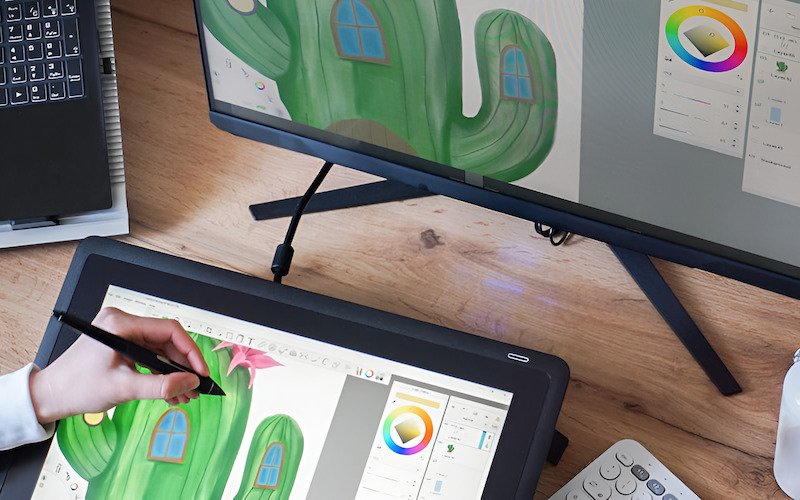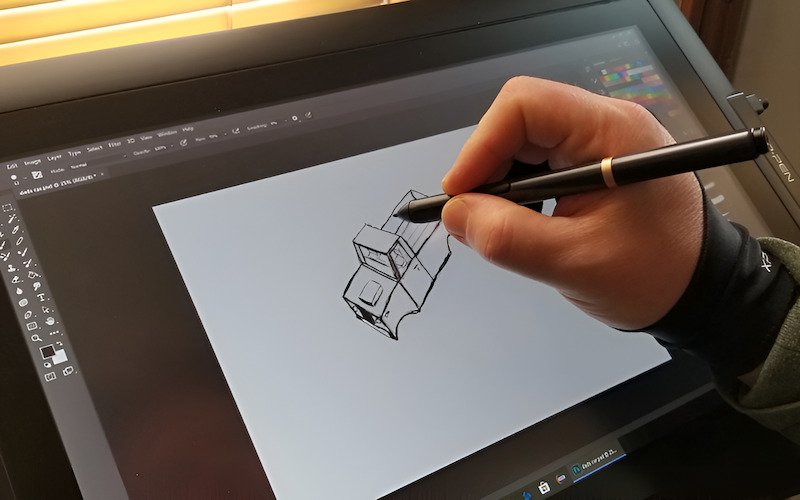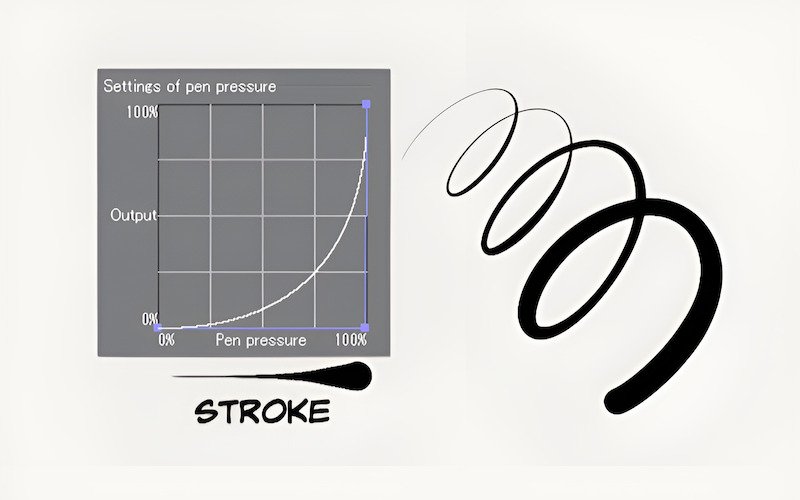What Is A Digitizer? Easy Guide: How It Works And Uses
Have you ever seen an artist sketch on a sleek pad, their creations instantly mirroring on a computer screen as if by magic? That fascinating tool is often a digitizer, a gateway to the world of digital creation. If you’ve ever wondered about this piece of tech, or you’re curious about how digital art comes to life, you’re in the perfect spot!
This guide will demystify the digitizer in simple, clear terms. We’ll explore what it is, its surprisingly clever mechanics, and the exciting possibilities it unlocks – not just for artists, but for anyone looking to interact with their computer in a more intuitive way
1. What is a digitizer?
A digitizer is a special tool that works like digital paper. Imagine drawing on paper with a pen — but instead of the drawing staying on the paper, it appears directly on your computer screen. The digitizer captures your hand movements and converts them into digital information that the computer can understand.
You can think of it as a magic surface where anything you draw with a special pen instantly shows up on the screen. This is one example of a data conversion device, which transforms real-world actions into digital input.
A digitizer has two main parts:
- The tablet/pad: This is the flat board you draw on. It can be called a graphics tablet, drawing tablet, pen tablet, or digital drawing pad. The special surface on the tablet where you draw is called the active area.
- The pen (stylus): This is the special pen you use. This pen is usually called a stylus. You use this stylus to draw or write on the tablet.

2. How does a digitizer work?
So, how does it work? It’s quite clever! This input technology uses sensors:
- When you move the special pen (stylus) on the tablet surface.
- The tablet is smart. It knows exactly where your pen is. It also knows how hard you are pressing down with the pen. This ability to feel how hard you press is called pressure sensitivity.
- The tablet then sends all this information – like a secret message – to your computer.
- Your computer gets the message and shows your drawing or writing on your screen!
It’s not magic, but very clever technology with tiny sensors inside the tablet and pen that make this happen. This process of changing your hand actions into computer information is sometimes called ‘analog-to-digital conversion’ (turning real-world movements into computer language). For many creative people, understanding how a digitizer tablet works for artists is the first step to using one.
3. What can you do with a digitizer?
Digitizers are useful for many things! Here are some cool uses:
- Digital drawing and painting: This is a big one! Many artists love using digitizers to make beautiful digital art. They can paint, draw comics, and create illustrations right on their computer. It’s great for digital art creation.
- Graphic design: Graphic designers use digitizers to make cool things like logos for companies, posters, and pictures for websites. It helps their designs look smooth and professional. This is super helpful for creating intricate designs, such as those needed for custom product packaging, an important part of graphic design for branding!
- Editing photos: Photographers often use digitizers to edit photos. It lets them make very small and exact changes, like carefully cutting out a person from a background or making skin in a portrait look smooth.

4. Are there different kinds of digitizers?
Yes, there are a few main types, which showcase different digitizer technologies and how they work. One common kind is often called a graphics tablet or drawing tablet. With this one, you have a flat tablet and a pen. You draw on the tablet, but you look up at your computer monitor (your main screen) to see what you’re drawing. It can take a little practice to get your hand and eyes working together like this!
Another kind is called a pen display. These are pretty cool because they have a screen built right into the tablet! So, when you draw with the pen, you see your drawing appear right under the tip of your pen, just like drawing on paper. Many artists find this feels very natural.
Also, some newer laptop computers or tablet computers (like iPads with an Apple Pencil) have special screens and pens that work in a similar way to a digitizer.
5. Why use a digitizer?
So, why use a digitizer instead of just your computer mouse? Well, for drawing or writing, using a pen (stylus) on a tablet often feels much more natural. It’s closer to how you use a real pen or pencil on paper. You usually have much better control with a pen. This means you can make smoother lines and more exact shapes. This is really great for making art or designing things.
This is a super important benefit called pressure sensitivity! It means the tablet can tell how hard or how soft you press down with the pen. If you press harder, your line on the screen might get thicker or darker. If you press lighter, the line might be thinner or lighter – just like when you use a real pencil!
Pressure sensitivity helps make digital art look much more alive and natural. Some digitizers can sense thousands of different pressure sensitivity levels, which gives you lots of control. Understanding digitizer pressure sensitivity (often explained in the context of drawing) reveals one of its biggest benefits: enabling detailed illustrations.
For people who draw or design for many hours, using a pen on a tablet can be more comfortable than using a mouse all day. It can be a bit easier on your hand and wrist. Good digitizers can also capture very tiny details in your strokes (this relates to how much detail the tablet can see, sometimes measured as LPI (lines per inch) – meaning more lines of detail in a small space).

6. A few more things to know
Here are a few more handy things about using a digitizer:
- The pen (stylus): The special pen, or stylus, is a key part. Good to know: some stylus pens need batteries to work. But many newer ones use battery-free pen technology (e.g., EMR pens), meaning they are designed to work without any batteries at all, which is super handy!
- Software: To use your digitizer, you’ll need computer programs, also called software. For example, if you want to do digital drawing, you’ll need a drawing app or program. If you want to edit photos, you’ll use photo editing software. Popular programs many designers use are things like Adobe Photoshop or Adobe Illustrator, but there are lots of other great choices too. For instance, specific software excels at creating vector art for logos and labels.
- Practice makes perfect: When you first start using a digitizer, it might feel a bit different or even strange, especially if you’ve always used a mouse or drawn on paper. Don’t worry! Just like learning any new skill, it takes a little bit of practice. Soon, it can feel very easy and natural.
Explore more:
So, there you have it! That’s the basic idea of what a digitizer is. It’s a really helpful tool that lets you take your ideas from your hand – whether it’s a drawing, a signature, or notes – and put them straight into your computer.
If you like to draw, paint digitally, design things, or just want a different way to be creative with your computer, a digitizer could be a very fun and useful tool for you to check out. Learning about tools like digitizers is a great first step if you’re curious about how people create amazing digital designs and art!






















